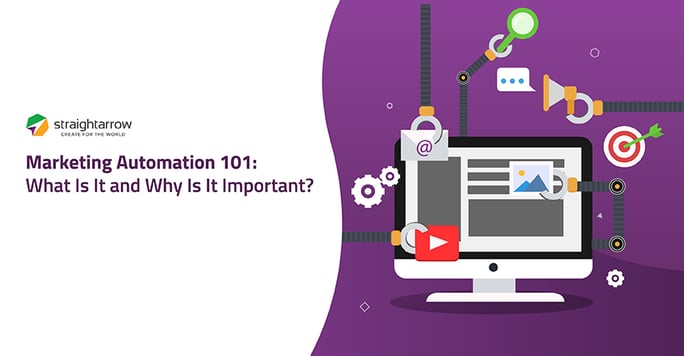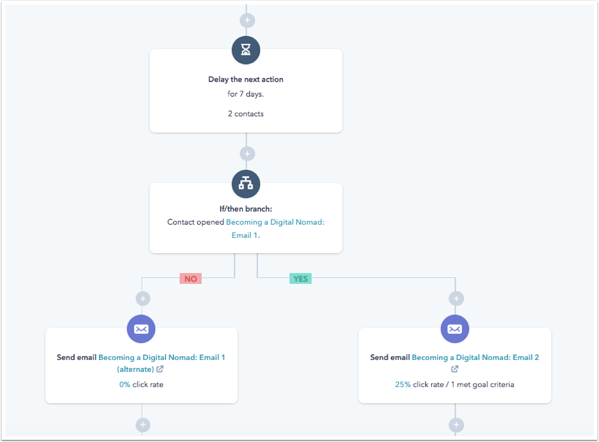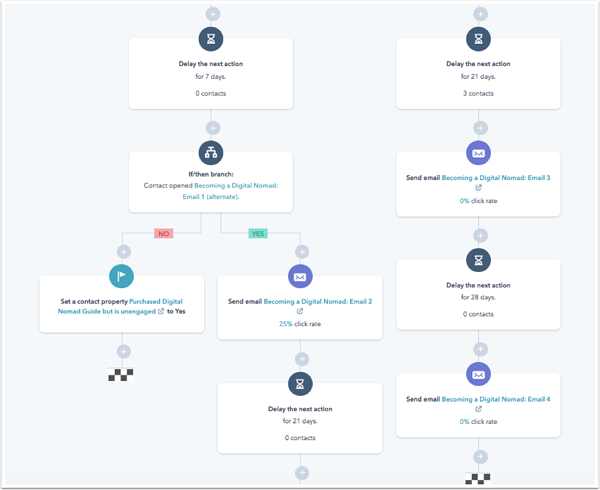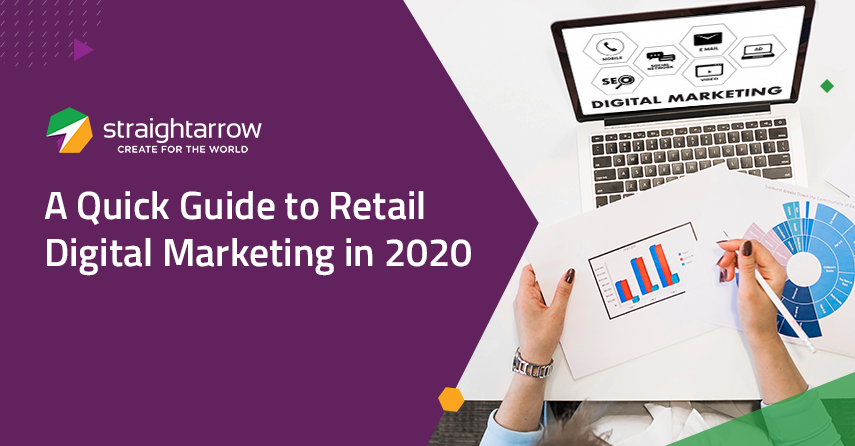
Marketing automation is among the most essential and reliable innovations used in the digital marketing world today. It helps marketers, as its name suggests, automate tasks such as getting more accurate data, personalizing marketing messages, and nurturing leads.
But before we go and delve further into the benefits, let’s take a crash course on what marketing automation is, how it works, and find out whether or not you’re maximizing all it has to offer.
What is marketing automation?
Simply put, marketing automation refers to software and technology that helps automate repetitive marketing tasks.
Using marketing automation, you can now easily do the following tasks:
- Sending emails and SMS
- Publishing social media posts
- Segmenting and updating contacts
- Gathering data and reports
- Other website-related actions
To start, you’ll need to set up a workflow (we’ll elaborate on this in a bit) using your marketing automation software to accomplish the tasks you’ve laid out for you.
But more than just automating tasks, marketing automation is also a tool that helps companies send personalized content to the right person at the right time. By leveraging this technology, you can now nurture and engage your contacts more effectively to turn them into customers or promoters of your brand.
There are several marketing automation tools that you can use, and each has its capabilities.
For instance, all-in-one marketing automation platforms can automate tasks such as social media marketing, content management, web analytics, search engine optimization, and customer relationship management.
If you want to start small, choose software that automates specific marketing actions you need help with.
How does it work?
Have you experienced receiving an email from an eCommerce shop that left you feeling like they know you and your preferences? Maybe they’ve sent a reminder that the item on your wishlist is on sale or that the item you opted not to buy is still available.
These are examples of how marketing automation helps ensure that the right messages are sent to the right people in your contacts list through workflows.
But how do workflows work?
A workflow is an essential part of marketing automation and comprises predefined conditions that trigger the completion of a specific task.
These triggers are usually based on consumer behavior, which you can measure based on how they interact with your website and emails.
To help you better understand how this works, here’s an example of a simple workflow on the HubSpot marketing and sales automation software.

As you can see from the sample workflow above, you must select an enrollment trigger or criteria to be met before a contract can enter a specific automation workflow.
In our example, contacts are enrolled in the workflow once they’ve filled out a form on a website. Since these contacts are now included in the workflow, they automatically receive a thank you email for filling out the form.
The example we’ve provided is called a linear or straightforward workflow. There are more ways you can maximize workflows on marketing automation software based on your objectives or goals.
For instance, you can use workflows to send informative emails to nurture the contacts or give them instructions to guide them in purchasing your product.
Take a look at this example from HubSpot:

In this workflow, the if and then branches send appropriate content to contacts based on their actions. Contacts who opened the first email received the second email; those who didn’t were sent a variation of the first email instead.
Aside from if or branches, marketing automation software also lets you delay tasks you’ve automated to ensure you’re sending the content at the right time.
For instance, if you’re creating a lead nurturing email series, you can set up your workflow to send the first email message immediately after signup.
Then, you can follow up with a second email after three or more days to prevent spamming your contacts with too many emails in a short period.

How can marketing automation help marketers?
While marketing automation won’t necessarily solve all your problems, it can give more meaningful insight and understanding of how to best address them, which can help you make informed business decisions.
Here are some ways how it does just that:
1) Saves time
Sending out emails and SMS messages, publishing on social media, and gathering data for insights on campaigns may sound simple. Still, these can also be tedious and time-consuming when done manually. Fortunately, marketing automation can help you work more efficiently.
According to Entrepreneur.com, automating social media posts and ads alone can help marketers save more than 6 hours per week.
And where email marketing and lead nurturing are concerned, you can set up a workflow to send the right content to the right people in your contacts list at the right time. Both free up your time to focus on more meaningful activities such as crafting a strategy.
2) Get accurate data efficiently
Marketing automation is not only an efficient tool that helps get things done. It’s also helpful when gathering data and insights based on the performance of your digital marketing efforts.
For instance, marketing automation for email marketing gives you visibility on the open and click rate, your fully engaged contacts, and their time spent viewing your email.
This makes it easier to analyze what works and what doesn’t for your email campaigns. Similarly, integrating marketing automation software into your social media channels allows you to track social engagement, top-performing content, and how visitors converted.
3) Amplify personalization
The data you gather from marketing automation can help you create and curate more unique and targeted content which can drive your business forward. Based on 2016 data from Publish or Perish, marketers that provide personalized web experiences get double-digit returns in marketing performance and response.
How do you use marketing automation to personalize content? If you have a store, for example, chances are you have customers with different characteristics and preferences.
Using your marketing automation platform, you can quickly draw insights into their preferences and nurture them with workflow and emails explicitly crafted for them.
The targeted content you deliver will help convert more visitors into leads, who become prospects and customers, who can eventually become your brand promoters.
Want to learn more about marketing automation?
Maximize your automation platform with help from digital marketing specialists who are certified in various HubSpot capabilities.
Connect with us, and we're here to help.














Comments